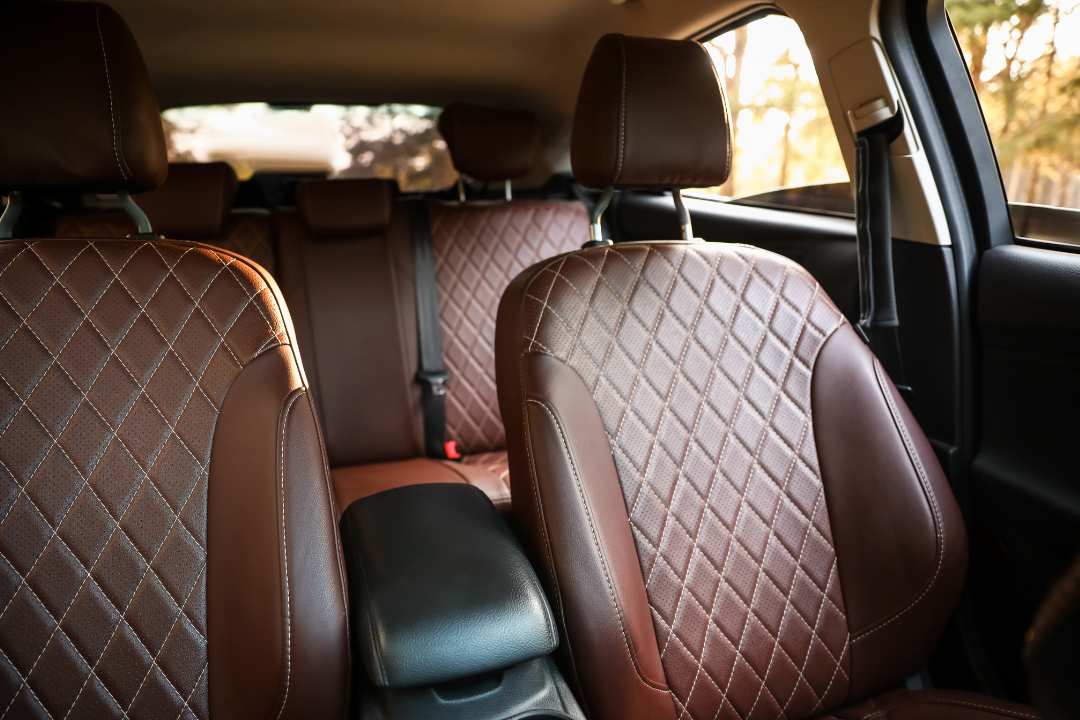The Art of Leather: Choosing the Right Material for Your Car Interior

Leather has long been synonymous with luxury and sophistication, especially when it comes to car interiors. The choice of leather can significantly impact the overall aesthetics, comfort, and even the resale value of your vehicle. In this guide, we’ll delve into the intricacies of selecting the right leather for your car interior, exploring various types, factors to consider, and emerging trends in the automotive world.
Introduction
Importance of Car Interior
Your car’s interior is more than just seats and panels; it’s your personal space on wheels. A well-designed and comfortable interior enhances the driving experience and reflects your style and personality.
Significance of Choosing the Right Material
The material used in your car’s interior plays a pivotal role in its durability, comfort, and overall appeal. Among the myriad choices available, leather stands out as a timeless option.
Types of Leather
A. Full-Grain Leather
Known for its natural markings and durability, full-grain leather is derived from the top layer of the hide. It develops a rich patina over time, adding character to your car’s interior.
B. Top-Grain Leather
Slightly processed to remove imperfections, top-grain leather maintains a luxurious feel while offering a more uniform appearance compared to full-grain.
C. Split-Grain Leather
Crafted from the lower layers of the hide, split-grain leather is more affordable but may lack the durability of full-grain or top-grain options.
D. Bonded Leather
Made from leftover leather scraps bonded together, bonded leather is an economical choice but may not possess the longevity of higher-quality alternatives.
Factors to Consider
Durability
Consider the wear and tear your car interior will face. Full-grain and top-grain leather are durable choices, while bonded leather may show signs of aging sooner.
Comfort
The texture and breathability of the leather contribute to comfort. Nappa leather, known for its softness, is a popular choice for those seeking a luxurious feel.
Maintenance
Different types of leather require varied levels of maintenance. Aniline leather may develop a patina with minimal care, while semi-aniline leather may need occasional conditioning.
Cost
Budget is a crucial factor. While full-grain leather may be expensive, there are affordable options like bonded leather that still offer a sophisticated appearance.
Popular Leather Choices
- Nappa Leather
- Aniline Leather
- Semi-Aniline Leather
Leather Alternatives
Synthetic Leather
For those seeking an animal-friendly option, synthetic leather provides a cruelty-free alternative without compromising on style.
Alcantara
A high-end microfiber material, Alcantara offers a luxurious feel and is often used as an alternative to traditional leather.
Customization Options
A. Colors
Leather allows for a wide range of color choices, enabling you to match your car interior with your personal style or the vehicle’s exterior.
B. Textures
From smooth to textured finishes, leather customization lets you tailor the tactile experience inside your car.
C. Stitching Patterns
Details matter. Choose stitching patterns that complement the overall design of your vehicle’s interior.
Environmental Impact
As environmental consciousness grows, explore leather options sourced through sustainable practices, reducing the ecological footprint of your vehicle.
Consider manufacturers adopting eco-friendly processes, ensuring your leather choice aligns with your environmental values.
Trends in Car Interior Leather
Modern Designs
Incorporating contemporary patterns and designs, modern car interiors showcase the evolution of leather aesthetics.
Technology Integration
Leather is now seamlessly integrated with technology, featuring smart functionalities for a futuristic driving experience.
Expert Tips for Choosing
- Seek advice from automotive interior professionals who can guide you through the selection process based on your preferences and lifestyle.
- Explore customer testimonials and reviews to gauge the real-world performance of different leather types in various driving conditions.
- Ultimately, choose a leather type that aligns with your personal taste and complements the overall design of your vehicle.
DIY Leather Care
A. Cleaning
Regularly clean your leather interior using recommended products to preserve its appearance and longevity.
B. Conditioning
Condition the leather to prevent drying and cracking, ensuring a supple and luxurious feel.
C. Protection
Invest in protective measures, such as seat covers, to shield your leather from spills and UV damage.
Common Mistakes to Avoid
Neglecting Maintenance
Failure to maintain your leather interior can lead to premature wear and a diminished aesthetic appeal.
Ignoring Personal Preferences
Selecting leather solely based on trends rather than personal preferences may result in dissatisfaction in the long run.
XII. Future Innovations in Car Interiors
A. Smart Materials
Advancements in smart materials will likely revolutionize car interiors, offering functionalities beyond aesthetics.
B. Sustainable Advancements
Look out for innovations in sustainable materials, contributing to a more eco-friendly automotive industry.
Case Studies
A. Success Stories of Well-Chosen Leather
Explore case studies highlighting the positive impact of choosing the right leather on the overall driving experience and resale value.
B. Impact on Resale Value
A well-maintained and quality leather interior can significantly enhance the resale value of your vehicle.
Conclusion
Choosing the right leather involves considering factors like durability, comfort, and personal preferences. Investing in quality leather is an investment in the longevity, aesthetics, and overall value of your car.
